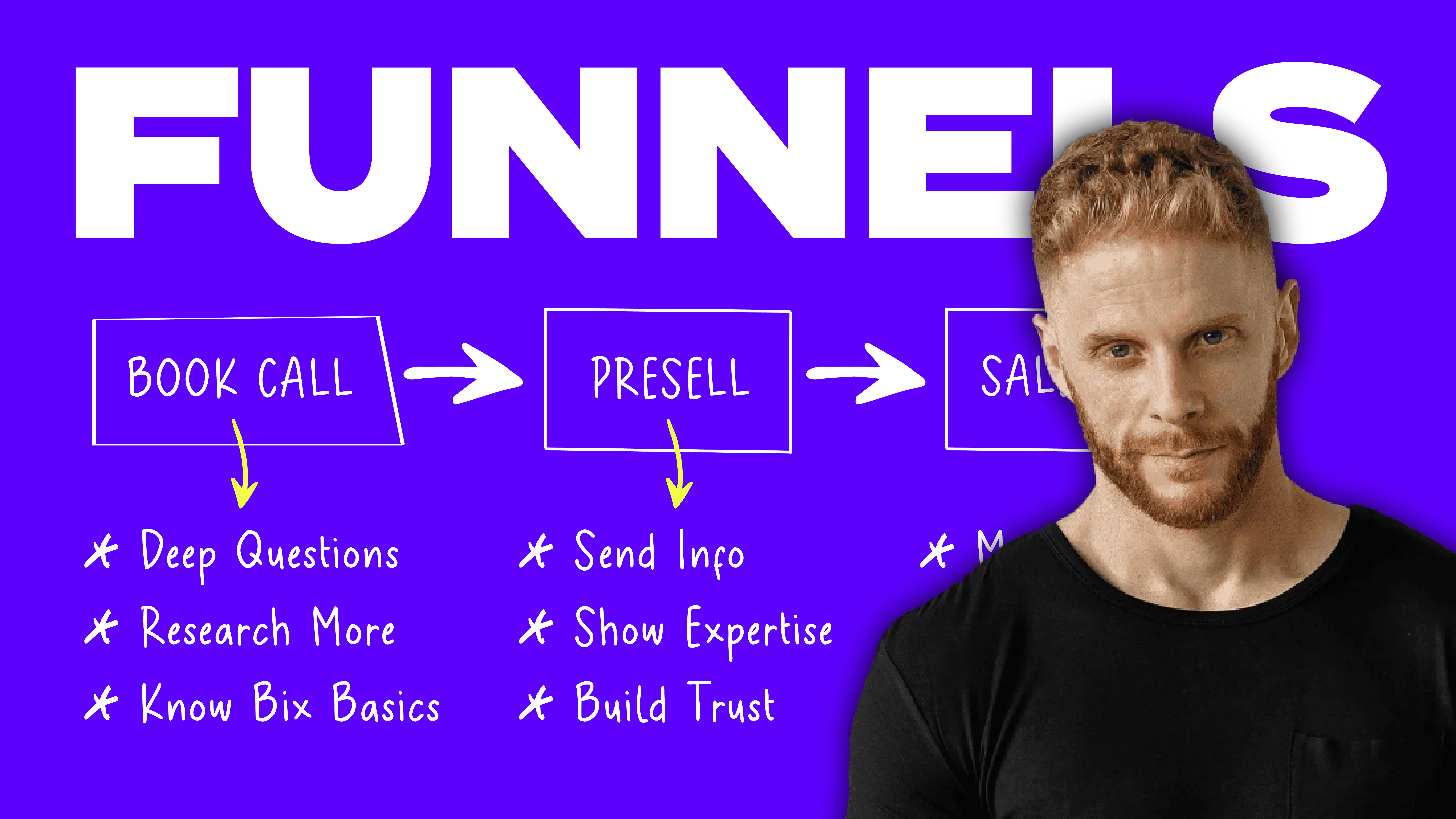We understand that things happen and situations change, but we hope you had a good experience with us!
Unfortunately, once a member leaves you can no longer reapply to join again down the road.
Are you sure you want to leave us?
.svg)
Sales Funnels That Generate Design Clients
Learn how to build a sales funnel that bring new design clients.

Building Profitable Sales Funnels for Online Service Businesses
Focus:
Designing effective, non-aggressive sales funnels tailored to online service businesses, such as designers, marketers, and SEOs, with a focus on long-term success.
Approach:
Utilizing client-aligned strategies that avoid high-pressure tactics and dramatic sales pages. The goal is to establish consistent, well-paying clients through high-level strategies.
Audience:
Online service business owners, ranging from beginners to advanced users, seeking to build a reliable client base.
Typical Sales Process:
- Get in Front of Potential Clients:
Use content, events, and SEO to attract potential leads. - Book Calls, Close Deals, and Make Money:
Engage leads through sales calls and close deals.
Missed Opportunity: Most leads who aren’t ready to buy immediately are often ignored.
Problem:
Treating leads like firewood—wasting them by only focusing on the few who are ready to buy.
Solution - Funnel Strategy:
Build a system that nurtures leads who aren’t ready to buy immediately. Understand that only a small percentage are actively ready to purchase at any given time. Rather than aggressive selling, guide leads into a nurturing system where they stay engaged until they're ready to make a purchase.
Key Funnel Stages:
Stage 1: Active Buyers
- These are the people who are ready to buy now.
- Typical Approach: Overloaded sales calls focused on basic questions, credentials, and deal-building.
- Problem: This leaves little time to address the client’s specific goals and challenges, which are critical for closing deals.
- Solution: Offload basic information gathering (business details, situation, etc.) to pre-call stages using forms or follow-ups.
Stage 2: Nurturing Hesitant Leads
- For leads who are close to buying but still hesitant (e.g., exploring options, unsure about ROI, or lacking trust).
- Email Strategy: Send 2-3 strategic emails per week over six weeks (12 total emails) to address specific concerns systematically.
Framework for Stage 2 Emails:
- Identify Resistance Points: Create a list of 20-40 concerns (e.g., trust, investment, effort, time).
- Group into Themes: Narrow these into 12 categories for your email sequence.
- Trust: Highlight testimonials and case studies.
- Clarity: Explain your process clearly.
- Quality: Showcase the value and impact of your work.
- Investment: Prove ROI.
- Effort: Emphasize how you'll reduce their workload.
- Past Experiences: Address concerns from previous failed attempts.
- Time: Clarify timelines for results.
- Risk: Reassure them with guarantees or proven results.
Stage 3: Long-Term Nurture Funnel
The long-term nurture funnel is for building and nurturing relationships with leads who are not yet ready to buy. The goal here is to stay engaged over time and offer consistent value, ensuring that when they're ready to make a purchase, you’re the one they think of.
- Purpose:
Focus on building relationships instead of direct selling. Provide consistent value to stay top-of-mind and establish your expertise. - Frequency & Timing:
Send weekly emails to maintain contact without overwhelming your audience. Each email should showcase growth and progress, both in your business and your clients’ successes. - Content Approach:
- Share wins and lessons learned from recent projects and challenges.
- Provide behind-the-scenes insights into your operations, highlighting your problem-solving skills and strategic thinking.
- Emphasize upward momentum—new client wins, bigger projects, industry recognition.
- Be authentic: Share both highs and lows, but always connect it to growth and improvement.
- Client-Centric Content:
- Share case studies and client success stories.
- Position your clients as heroes, with you as the guide helping them achieve their goals.
- Demonstrate empathy for their pain points and show how you can solve their problems.
- Tone & Messaging:
- Be optimistic, supportive, and relatable.
- Show vulnerability and strength—you’re in the trenches, working hard to help your clients win.
- Avoid being overly salesy—focus on building trust and connection over time.
- Engagement & Call-to-Action:
- Encourage engagement by inviting readers to share thoughts or experiences on topics you discuss.
- Offer valuable content such as templates, guides, or tips—remind them of your expertise without directly selling.
- Use soft CTAs like “If you’re ready to take the next step, I’d love to chat” or “Let me know if you’d like to learn more about how we can work together.”
- Patience & Persistence:
- Recognize that this is a long-term game—it’s about planting seeds for future sales.
- Be persistent without being pushy. The goal is to stay on their radar, reinforcing your credibility and capabilities.
- People may not be ready now, but when they are, they’ll be more likely to choose you over competitors.
By focusing on relationship-building and consistent engagement, you ensure that even if people aren’t ready to buy immediately, they’ll remember you when the time is right, making them more likely to choose you when they do.


